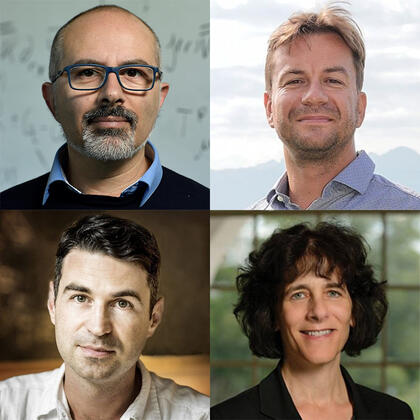
Four distinguished faculty members from Johns Hopkins University’s Krieger School of Arts and Sciences have been selected to participate in groundbreaking, multi-institutional collaborations funded by the Simons Foundation. These highly competitive projects aim to unite scientists to explore novel areas of scientific research, sparked by significant new developments in established fields.
The announcement highlights the Simons Foundation’s commitment to facilitating large-scale, longitudinal studies through its collaboration grants. These grants provide essential support for postdoctoral and doctoral students, funding for travel and meetings, and the opportunity to leverage expertise from co-principal investigator (co-PI) institutions and beyond.
Johns Hopkins’ Role in Learning the Universe
One of the collaborations, Learning the Universe, which commenced in 2021, has been renewed for an additional three years. This renewal includes Johns Hopkins University as one of the co-PIs, following the recent appointment of Benjamin Wandelt as a research professor in the Department of Physics and Astronomy. The collaboration employs a Bayesian forward modeling approach to infer the universe’s initial conditions and the physical laws governing its evolution.
Exploring Black Holes and Strong Gravity
The Collaboration on Black Holes and Strong Gravity seeks to deepen our understanding of strong gravity, a concept rooted in Einstein’s theory of general relativity, which describes it as the curvature of spacetime. The focus is on black holes, enigmatic objects whose intense gravity prevents even light from escaping. When black holes collide, they produce gravitational waves—ripples in spacetime—that were first predicted by Einstein. Scientists now have the capability to “listen” to these vibrations and decode the universe’s secrets.
This multidisciplinary effort spans theoretical physics, mathematics, numerical computation, AI-assisted data analysis, and gravitational wave observation. The collaboration aims to illuminate the matter-antimatter asymmetry of the universe, the nature of dark matter, and potential new physics beyond Einstein’s theory.
“The research by the collaboration is particularly important in this moment because it is designed to optimize the science return of the LIGO-Virgo-KAGRA collaboration, while also planning for similar future experiments that should be operational in about a decade,” said Berti. “It’s exciting because it brings together leading researchers in a broad range of disciplines to advance our understanding of gravity—the dominant force at large scales in the universe—and of black holes.”
Advancing AI Understanding through Physics and Math
The Collaboration on the Physics of Learning and Neural Computation addresses the rapid advances in AI, which are significantly impacting the economy, society, and scientific research. Despite these advancements, the scientific understanding of AI’s capabilities remains limited. AI is often seen as a “black box” improved through trial and error rather than comprehension.
This program integrates essential concepts and methodologies from physics and mathematics to study AI as a complex system. By doing so, it aims to elucidate fundamental principles of learning and computation, breaking AI out of its black box with broad implications for academia, industry, and society.
“AI is being deployed all around us. It is critical to study its theoretical foundations to understand its full potential and limitations,” Ménard stated.
Unraveling the Mysteries of Ecological Neuroscience
The Collaboration on Ecological Neuroscience investigates how the brain integrates sensory and motor information to make efficient decisions. This program tests the hypothesis that the brain links perception with action by encoding “affordances”—opportunities for action available in the environment, such as a chair offering the chance to sit.
Spanning theory, data science, and brain modeling across species from rodents and bats to humans and primates, the project aims to bridge gaps in understanding cognition by identifying how the brain represents these sensorimotor interactions.
“This research project presents an extraordinary opportunity for scientific advances by integrating theory, data science, and coordinated neuroscience experiments in diverse species,” Moss noted. “To my knowledge, no one has tried such an ambitious project as this, taking the framework of affordances and testing it rigorously across brain areas and across species.”
The involvement of Johns Hopkins University in these prestigious Simons Foundation collaborations underscores the institution’s commitment to advancing scientific knowledge and fostering interdisciplinary research. As these projects progress, they promise to yield transformative insights into the universe, AI, and the human brain, with far-reaching implications for science and society.







